Scots pine: description, features of planting and reproduction
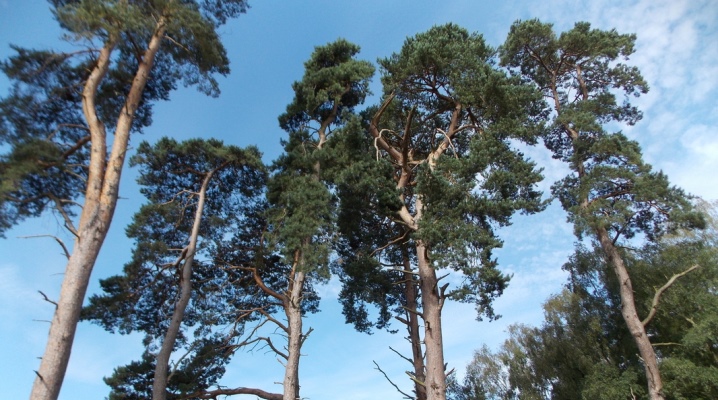
Scots pine is a fairly common coniferous plant found in various regions of Europe and Asia, as well as beyond. Its description, root system, flowering and breeding features are of interest not only to botanists. Modern landscape designers and amateur gardeners willingly choose this particular plant, making it a true decoration of the local area, parks, squares.
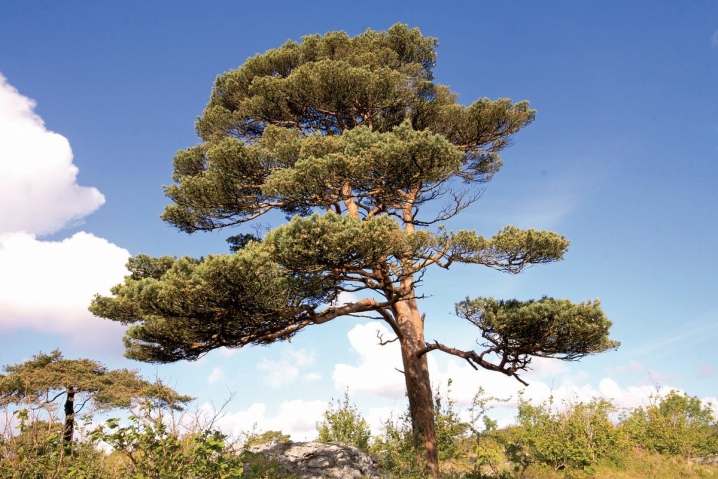
There are a lot of secrets in growing young pines that have to be taken into account. How to prune a pine tree so that it grows up and does not enlarge the side shoots? Can it be used as a basis for bonsai, and what popular varieties are recommended by experts for cultivation - in order to find answers to these questions, it is worthwhile to study in as much detail as possible everything that is known about this representative of the class of conifers.
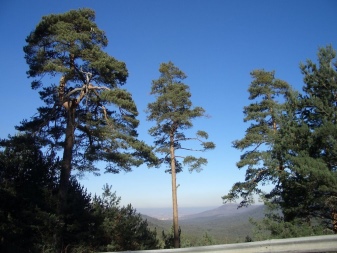
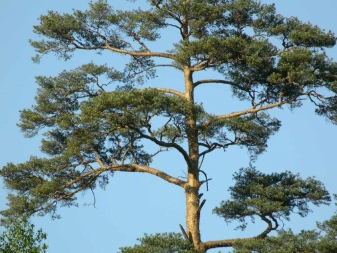
Description
The taxonomy of the plant says that the Scots pine belongs to the genus Pinus of the pine coniferous tree family. Referred to lat. Pinus sylvestris, it is also known by other names, most often associated with the geography of this species. The botanical description of the tree, as well as its scientific name, was officially confirmed as early as 1753. The average height of Scots pine, which has reached maturity, is 25–40 m in the wild; the highest rates are recorded in its natural habitat, in the south of the Baltic. Botanical characteristics indicate that the trunk of the plant looks straight, but can be bent as a result of the influence of pests - leaf moths, which infect shoots at an early age. The crown of young trees has a conical structure; as it grows, it acquires a rounded shape. Whorled branches, located horizontally relative to the trunk.
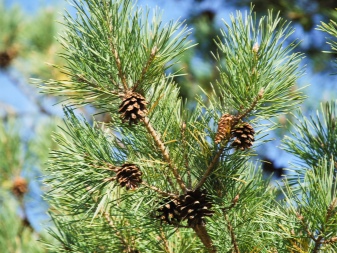
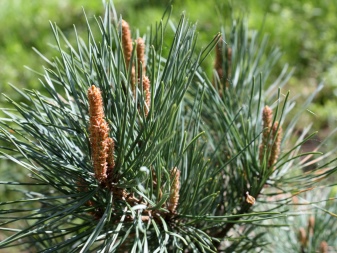
The bark of a tree changes as it climbs. At the very top, the trunk is orange-red, its surface exfoliates, separating scales. In the lower part, closer to the roots, the bark thickens, acquires a gray-brown color and pronounced fracturing. Yearling shoots are gray-brown, young ones are green.
Reproductive organs, fruits and seeds
Like other conifers, Pinus sylvestris has buds that form after flowering. There are seeds inside them. It is worth noting that the tree has male and female cones that differ in appearance. Pine blooms with small "candles" on which there is pollen, carried by the wind from one plant to another. Since insects do not participate in pollination, the tree does not emit a strong smell during this period.
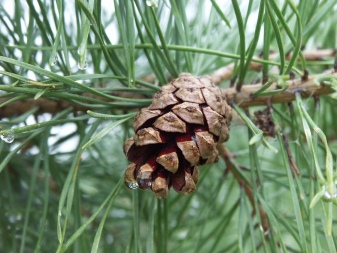
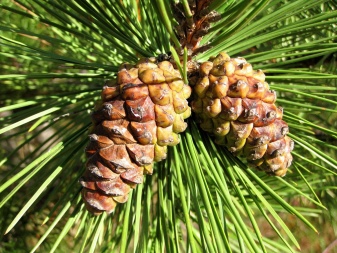
The inflorescence plays the role of reproductive organs. Male and female flowers appear on different branches and have pronounced differences. Usually yellowish, upright "candles" are mentioned. This is how male inflorescences look, female inflorescences are less elegant, pinkish in color. The breeding period begins in the spring, with a stable achievement of average daytime temperatures within +20 degrees.
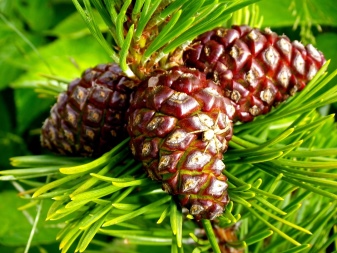

From the moment of pollination to the ripening of the female cone, 20 months pass. During this time, the female fertilized inflorescences acquire a matte texture and gray-green or gray-brown color.In the period from the end of winter to mid-spring, ripe cones open up, pouring out black oblong seeds, equipped with a membrane-wing, and then they themselves die off, fall off.
Features of the root system
The root system of Scots pine has the ability to change its properties depending on the choice of soil for planting it. It is this organ of the plant that largely affects its health - its damage, damage by diseases can lead to the death of the entire tree. An earthy clod at the stage of its formation creates a symbiosis with mycorrhiza - a special type of fungus that allows the roots to receive adequate nutrition. That is why it is highly not recommended to damage it during transplantation.
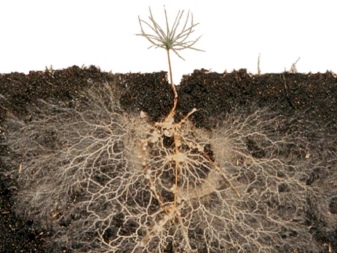
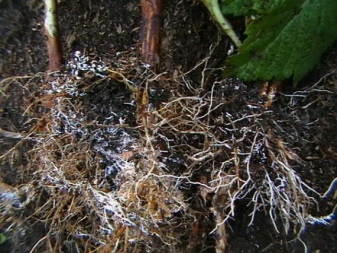
Among the types of root system found in ordinary pine, the following options can be distinguished.
- Fibrous. It develops as a result of planting in soil with a non-flush regime of water inflow. In this case, the flow of precipitation with moisture does not cover the volume of evaporation from the soil.
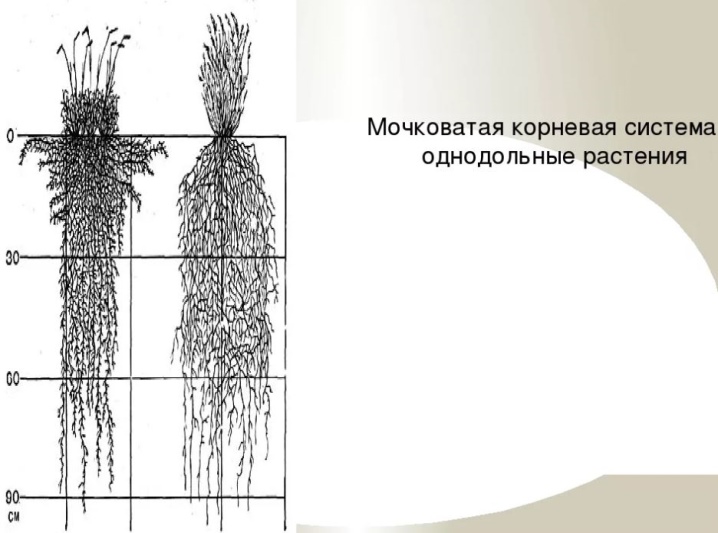
- Rod. This type of root is characterized by a well-defined main shaft and minor lateral shoots. It develops on soils with a well-drained structure.

- Surface. It is characterized by the formation of a large number of lateral shoots with a relatively small main root. This type of root system forms when the soil is prone to dryness and the groundwater is too deep.

Tree lifespan
Scots pine rarely lives in nature for more than 70–80 years due to deforestation and diseases that affect it in the process of growth and development. By this age, the tree already reaches 20–25 m in height. But the real life span is much longer. In the reserves, there are specimens that have reached 300 years or more, and this is not the limit. The potential of Pinus sylvestris is enough for 500 years of growth.
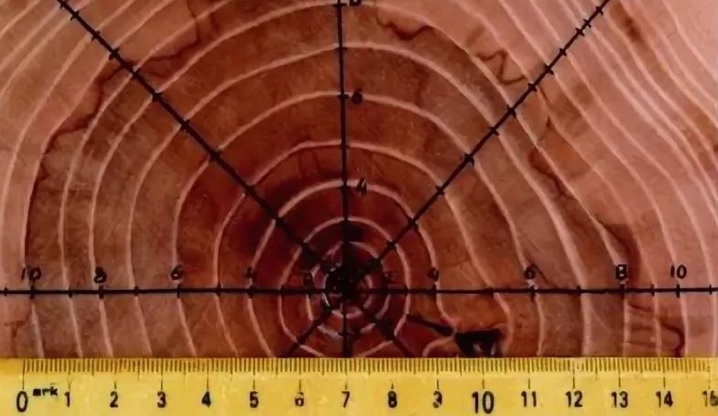
Habitat
Scots pine is a species that is found almost throughout the territory of mainland Eurasia, as well as on the islands. So, it can be seen in the UK, on the coast of Spain, in the Eastern European regions, including the Balkans... To the north, the habitat extends to Finland and Sweden. In the south it reaches the limits of China. Scots pine is often found in Mongolia - there is even a separate subspecies of Mongolica, one of the three officially recognized.

In Russia, the distribution of Pinus sylvestris is mainly associated with the territories of the Far East. In the Angara region, its separate ecotype is distinguished, this species is widespread in Transbaikalia, it is found in the south of Siberia, in the north it extends to Karelia and Murmansk - the subspecies Lapponica grows here, even in the conditions of Solovki and the coast of the White Sea, reaching a height of 30 m.In the European territory of the country, the tree found everywhere.
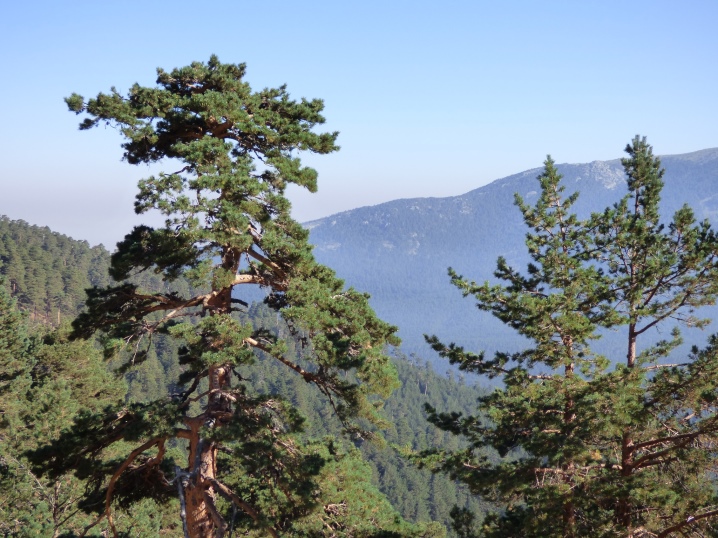
How fast does a pine tree grow?
Pinus sylvestris is a species whose annual growth rate largely depends on the variety and age of the plant. In the wild, the trunk height increases to an average of 10 cm annually, during the first 5 years. Further, the pace only accelerates. Scotch pine at 5-10 years old grows by 30-40 cm per year, and older trees are gaining up to 1 m. Growth retardation occurs at the age of 30–40. During this period, the tree directs the main efforts to branching and increasing the diameter of the trunk. On average, in an adult tree, the crown diameter at the points of attachment of the lower shoots reaches 4 m.
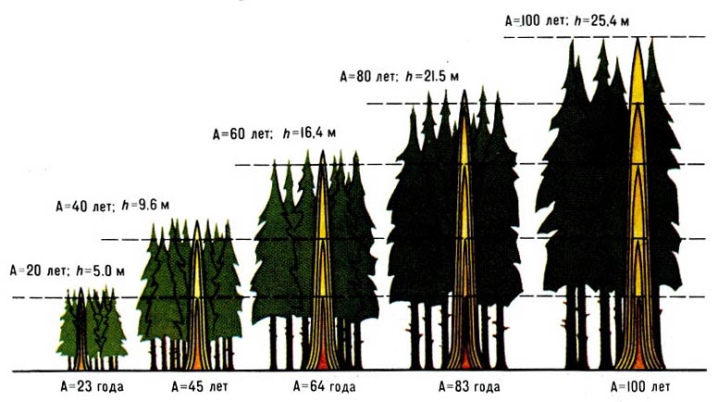
Dwarf forms of Scots pine have a different growth rate. They rarely grow more than 2 m in height by the age of 10 and later do not differ in record rates. In addition, growing conditions can affect the rate of stem elongation. For example, on impoverished soils, in very cold climates, with strong winds, little sunlight, trees will show a significant slowdown in growth.
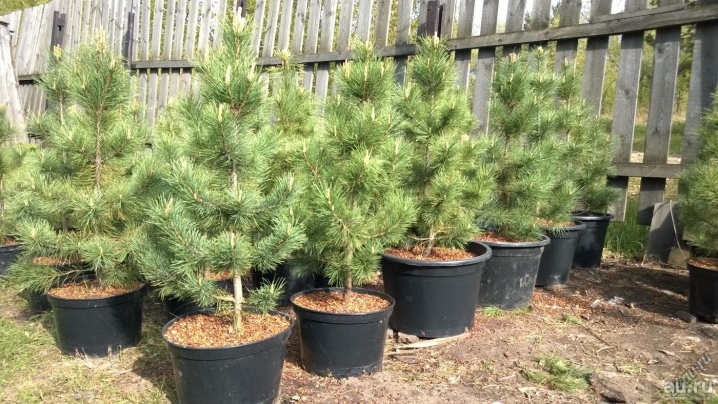
Overview of species and varieties
Scots pine is a species that has an additional division into subtypes. This tree itself is also called Scottish pine, European or forest pine.In addition, there are about 30 ecotypes, divided according to the conditions of their growth. For example, in Russia there is Angara, Siberian, northern, Kulunda and Lapland pine, in Scotland - Scotica, represented by a small number of stands... Hercynica grows in Germany and the Czech Republic, Hamata grows in the Balkans and Turkey. Lapponica is common in Scandinavian countries and in the north of the Russian Federation. Mongolica is the most eastern subtype found in Mongolia, China, Siberia, in mountainous regions at an altitude of 300 m above sea level.
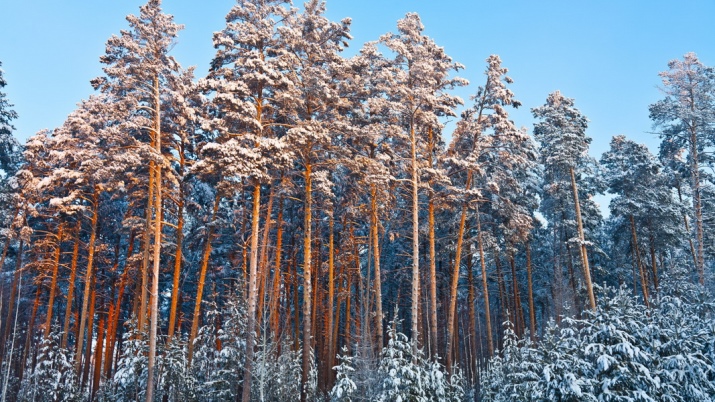
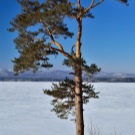
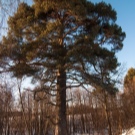

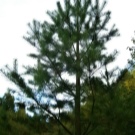
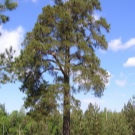
There is a division into subspecies and by the type of preferred soils of growth of the species. So, Scots pine has swamp and chalk varieties. There are also decorative forms, dwarf, blue, columnar options are especially popular. Most of the forms with a spherical crown were grown on the basis of grafted "witch's brooms" - neoplasms in the crown of pine trees, which are characterized by abundant branching, shrinking needles.
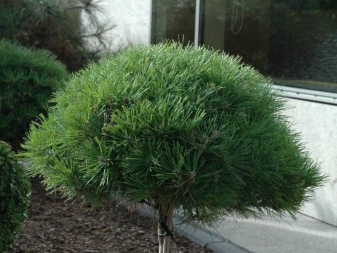
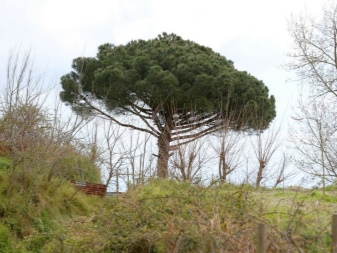
There are officially more than 120 varieties of Pinus sylvestris, the following are considered the most popular for cultivation in the field of landscape design.
- Glauca. Scots pine with a gray-blue color of needles, there is a dwarf form Glauca Nana. In the usual form, the annual growth rate is 15 cm, the crown is formed by analogy with a wild tree. The dwarf tree is characterized by a spherical dense interlacing of branches, the branches of an adult tree reach 1 m in length.
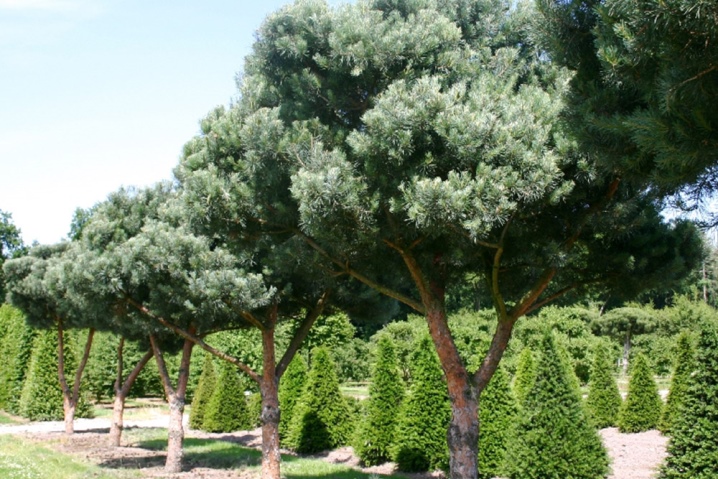
- Watereri. The variety, known since 1891, is a dwarf variety with a trunk growth rate of no more than 5 cm per year. An adult tree can reach 7.5 m. In young Vatereri pines, the crown has an ovoid shape, with a short stem, this effect decreases as it grows. The color of the needles is gray-blue, the needles are long (up to 4 cm), have a pronounced twisting at the ends.
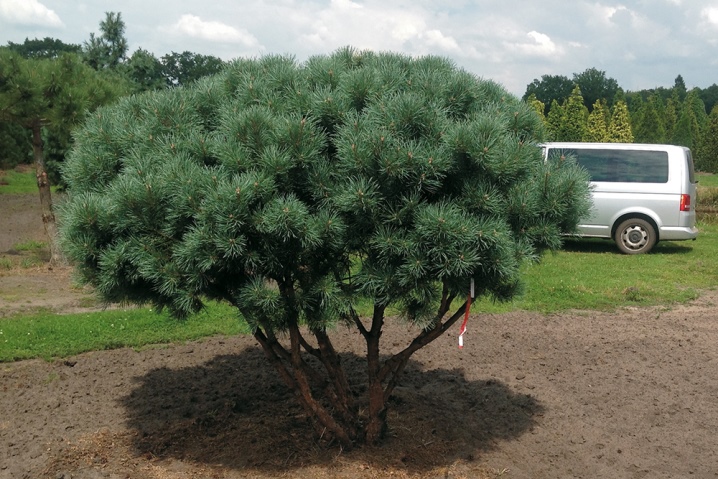
- Fastigiata. An ornamental variety with a columnar crown shape grows up to 15 meters or more, the branches of an adult tree may need correction. They are tightly pressed against the surface of the trunk. For "Fastigiata" is characterized by a bluish-green coloring of the crown, the presence of smaller cones.
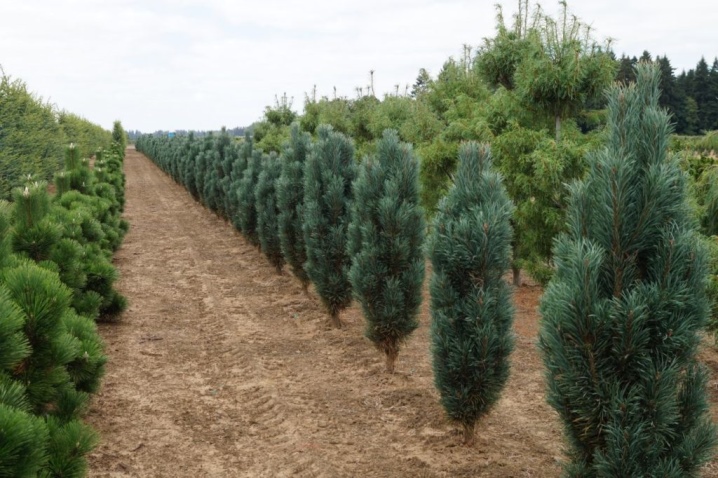
- Aurea. A medium-height variety, it is characterized by slow growth, ovoid or wide-pyramidal crown type. In winter, after frost, the needles acquire a bright yellow color. If you want to get this effect in the summer, it is better to plant the English Gold Coin variety.
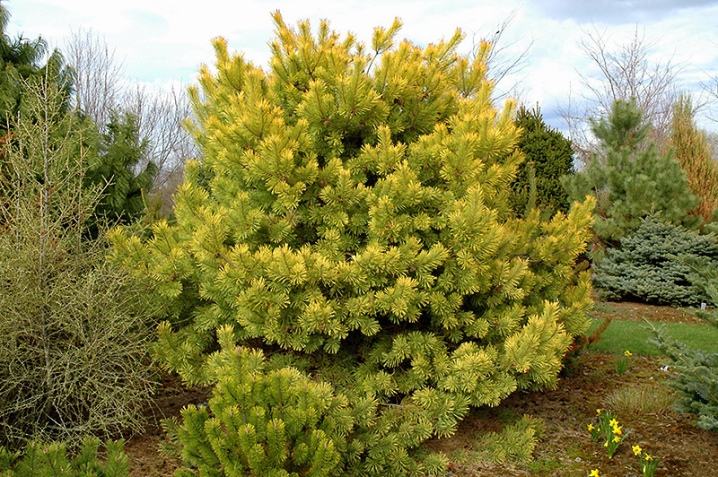
- Norske Typ. Norwegian variety well suited for bonsai creation due to the branchiness of the crown. An adult tree has an average size, by 10 years it reaches 12 m, the crown is similar to the wild form of Pinus sylvestris. The needles are short, bright green.

- Globosa Viridis. The Globoza viridis variety belongs to decorative dwarf forms, at a young age a spherical crown is characteristic of the tree, then it takes on a conical appearance. By the age of 10, both in height and in diameter, the pine reaches 1 m. The variety is characterized by the formation of tassels at the ends of the shoots, needles of a dark green color, short of this year, and longer of the past.
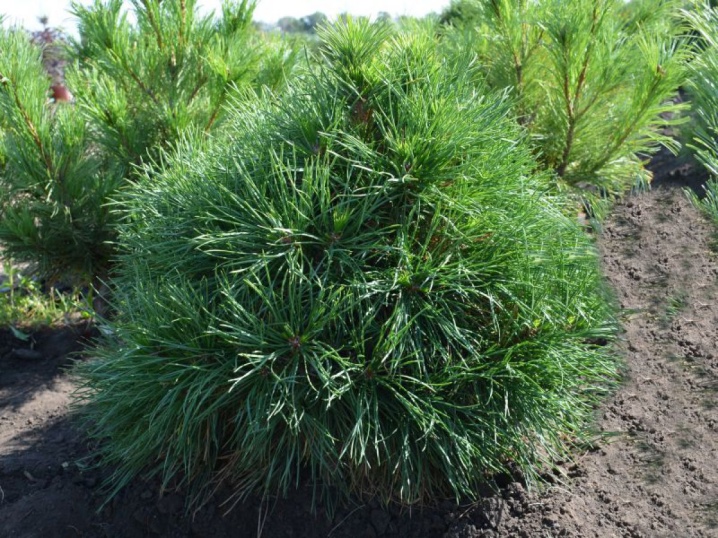
- Candlelight. Fast-growing, medium-sized cultivar with a conical crown. Young shoots look very decorative due to their light yellow color, they resemble vertically directed candles.
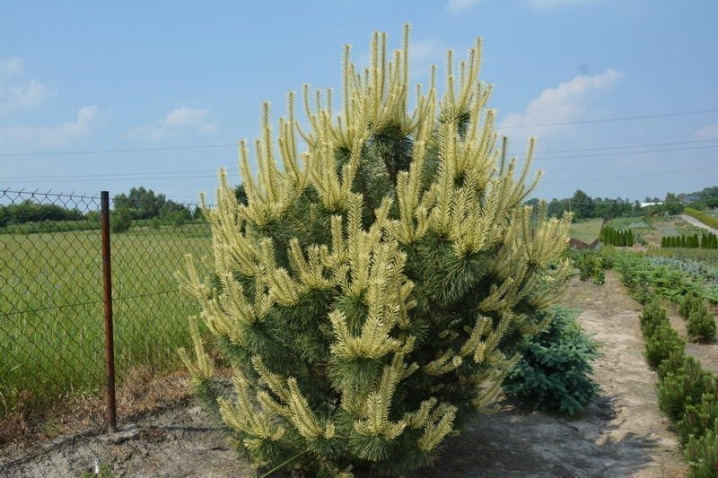
- Viridid Compacta. A dwarf variety with a characteristic pyramidal crown. In young trees, shoots form very densely, thin out as they grow, the needles are bright, green, elongated, twisted in the places of bud formation.
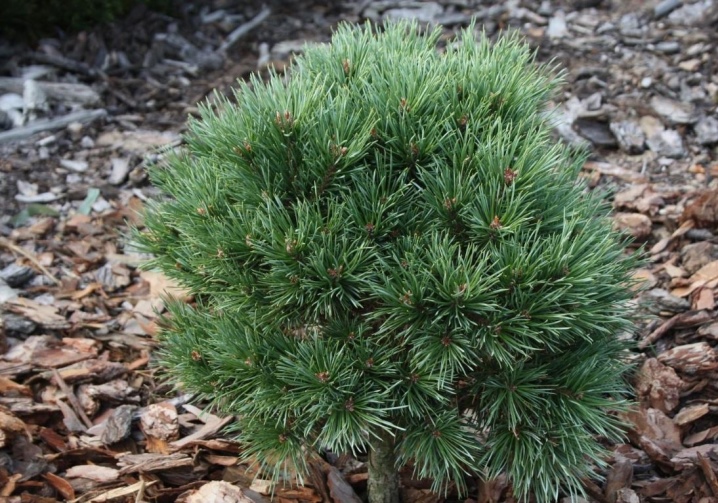
- Repanda. The flat decorative form of Scots pine is characterized by the formation of powerful shoots with a pronounced spreading of branches. During the year, the growth is about 10-15 cm. The needles are long, gray-green, the needles reach 5-8 cm.
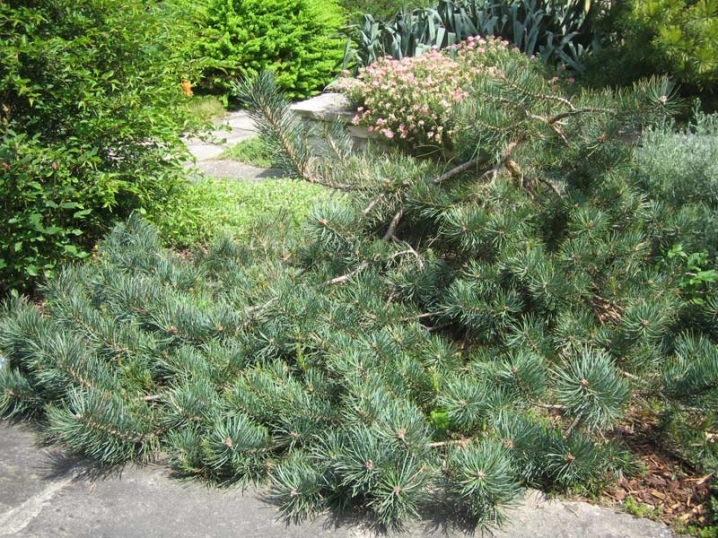
- Chantry Blue. A dwarf ornamental variety with very slow growth. The crown is hummocky, compact and lush, with bright male orange cones against a background of blue needles.
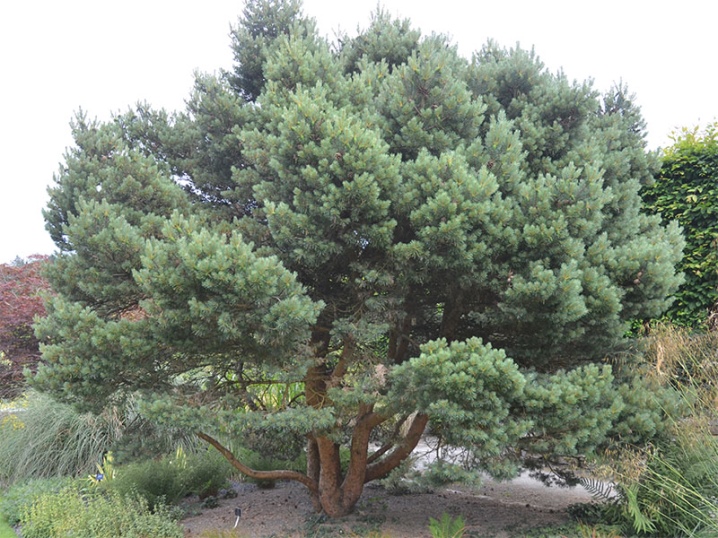
- Moseri. A variety considered to be a wild hybrid of black pine. A dwarf form with a slow growth of the trunk and an ovoid crown. The variety is characterized by abundant branching, high density and stiffness of the needles, the length of the needles reaches 6 cm.In winter, the tree turns yellow.
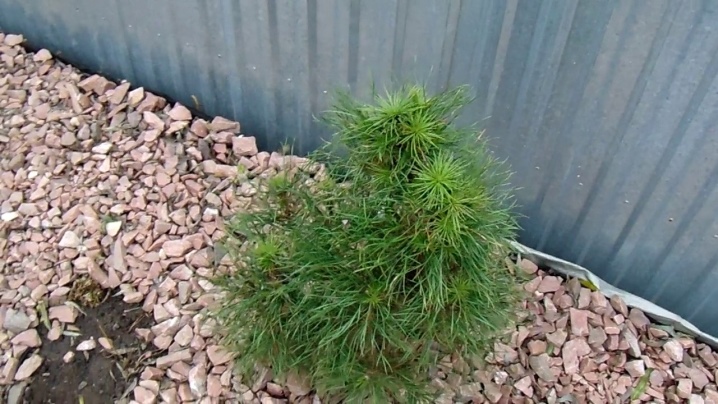
- Sandringham. The variety, cultivated since 1970, originated from the "witch's broom", bred by British breeders. The height of an adult tree does not exceed 1 m, it can be grown as a graft on a higher trunk.The needles have a green tint, the crown is very dense, of the correct spherical shape.
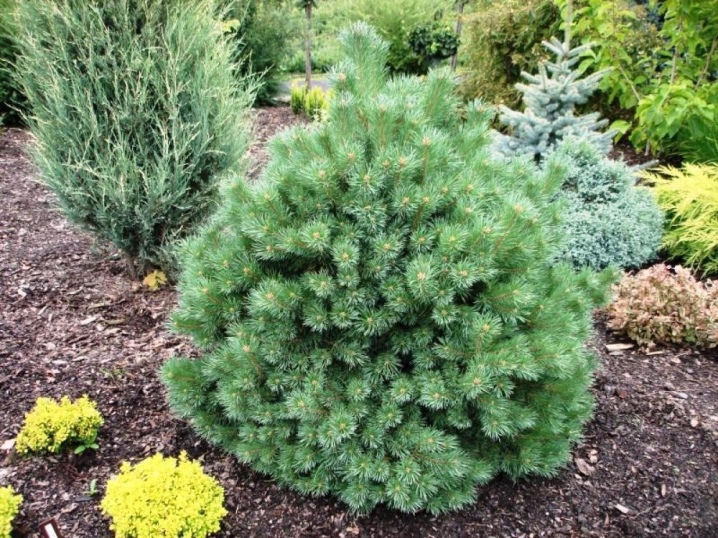
- Jeremy. English dwarf Scots pine with a characteristic cushion crown. It grows up to 1 m in height and up to 1.2 m in diameter, has short bluish-green needles. Abundant branching of lateral shoots. The variety is popular with the creators of rock gardens and rockeries.
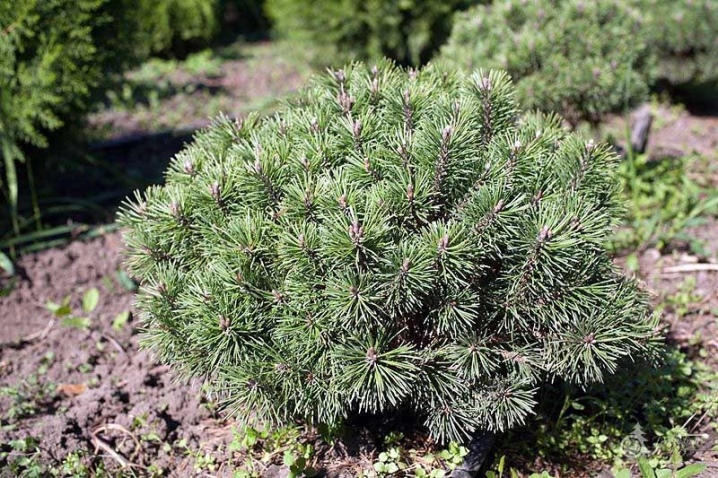
- Compressa. French dwarf variety with a columnar crown type, the branches are tightly pressed against the trunk, the needles are short, green, with a bluish tint. The growth per year does not exceed 4–5 cm.
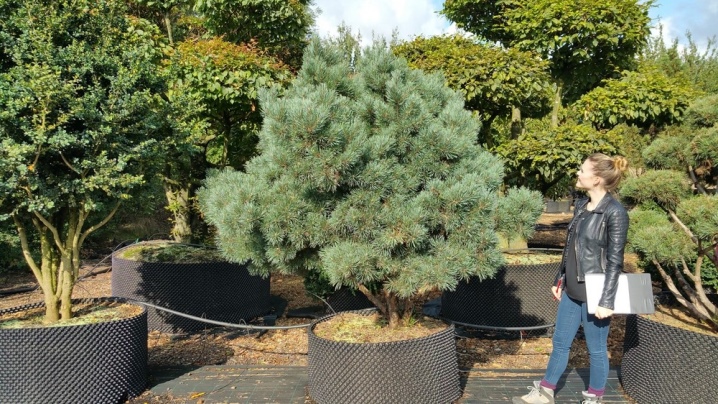
- Bonna. A tall, fast-growing variety with a crown like its natural form. A distinctive feature is the bright blue color of the needles, which gives the tree a special decorative effect.
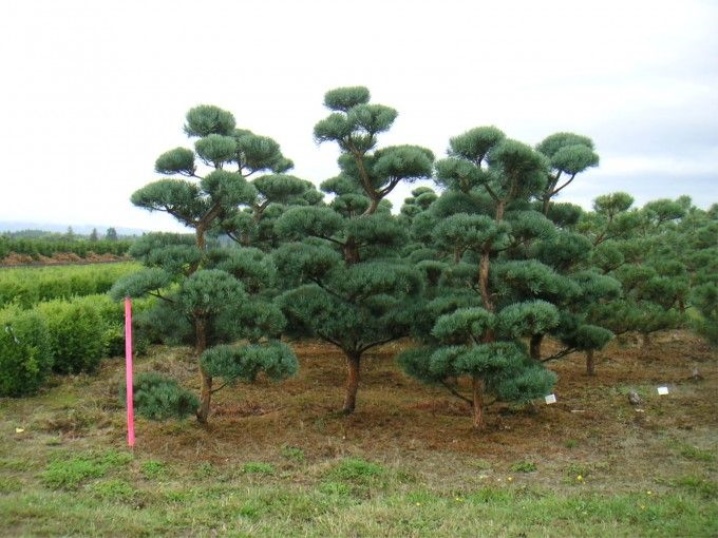
These are just a few of the most popular Scots pine varieties suitable for landscaping small and large areas, alpine slides, gardens and parks.
Seat selection
In order for Pinus sylvestris to take root well on the site, it is imperative for it to choose the right planting site. The main requirement is good illumination. The thick shade of the Scots pine is contraindicated. But this light-loving plant can quite successfully grow in a small shade, on a soil area partially closed from the sun. With a lack of natural light, the tree can form bends in the trunk, as the shoots will look for more favorable conditions for development.
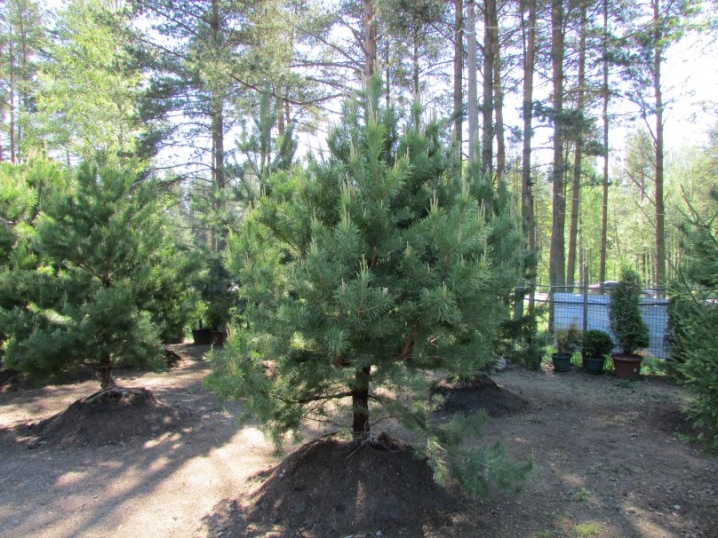
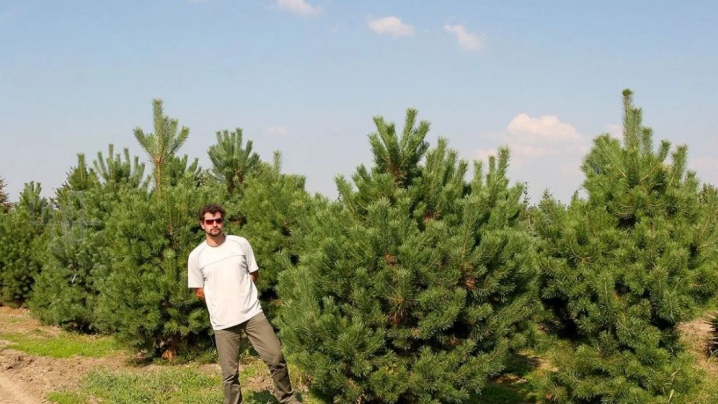
Landing rules
For the successful survival of Scots pine, the choice of seedlings is also important. Mostly these should be plants with a closed root system, in a container. They can be transplanted almost painlessly, without fear of possible difficulties with the rooting of the tree. In addition, in this case, symbiosis with the microorganism mycorrhiza, which provides nutrition for the tree, will be preserved - this is very important for a species that adapts to the type of soil and growing conditions.
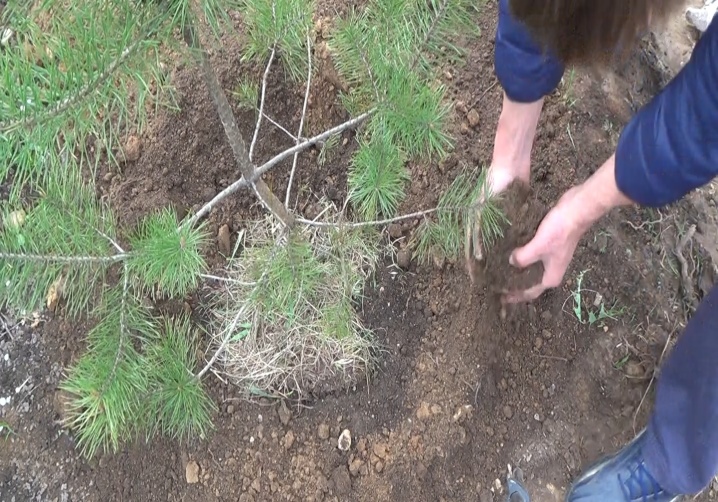
In plants with an open root system, this important condition cannot be met - in a bag or sacking, a useful symbiont mushroom will die without the usual environment after 45 minutes. That is why container seedlings are selected for planting, and they are removed from the container only immediately before being placed in a pit for filling with soil. The optimum age of the tree is no more than 5 years.
When digging a planting hole, it is necessary to focus on the size of the roots - it is approximately equal to the dimensions of the container, with an increase of 2-3 cm in width and depth for soil drainage and adding fertile soil. A pebble or broken brick is laid at the bottom of the created recess, a layer thickness of 3 cm will be enough, fertile soil is poured on top. It should contain peat, turf, humus and river sand in equal proportions, in addition, it is recommended to add 1 tsp. nitroammophoska and mix everything thoroughly. Laying the finished soil mixture for drainage is carried out in a thin layer, no more than 20 mm.
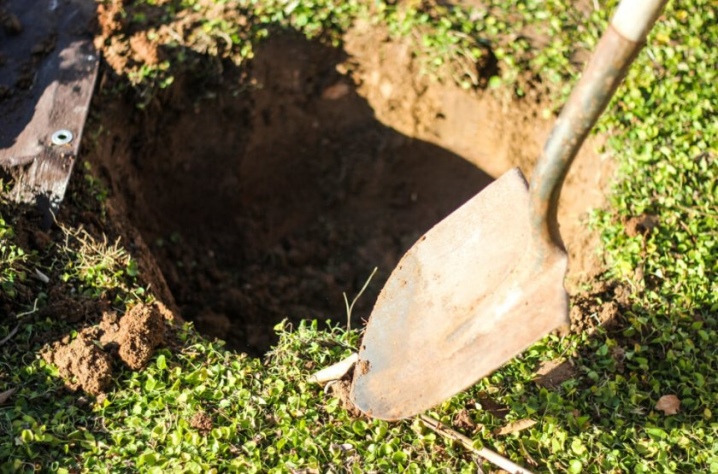
After the hole with the earth is ready, you can cut the container along the contour without damaging the roots and move the seedling to the place of its future cultivation. In the process of performing this work, it is very important to minimize the risks to the pine and not to affect the formed earthen lump. The root collar is not buried - it should, even after shrinkage of the trunk circle, be on the same level with the upper edge of the pit. The planting contour is filled with prepared soil mixture, carefully compacted.
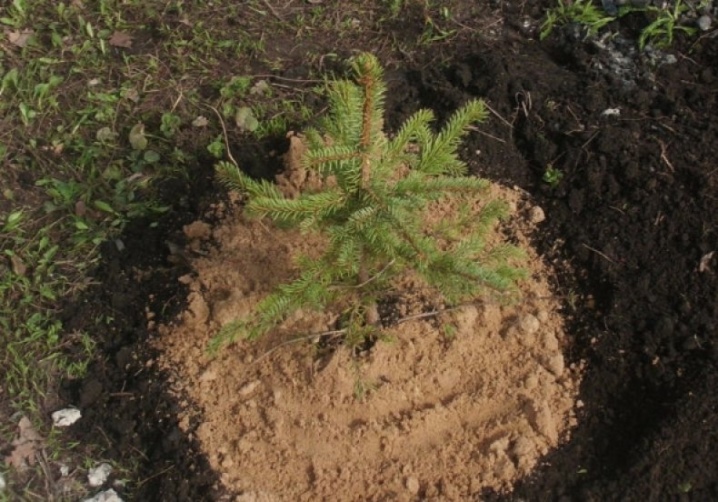
After the tree is in the ground in a new place, it is watered with 10 liters of water introduced at the root. Then the planting site is laid with a layer of peat or humus about 2 cm thick. This will allow the soil to dry out during the rooting of the seedling. If planting is carried out on a hot day, you can additionally sprinkle the crown in the evening.
Care features
The main features of scotch pine care are that it requires measures to shape the crown. This is especially important for decorative and dwarf varieties. In the spring, the obligatory pruning of dried or broken branches under the weight of snow is performed with an ordinary pruner. They are removed before the start of sap flow in deciduous trees. It is necessary to prune the tree to form the crown. So, if the tree initially shows signs of one-sided growth due to lack of light, this can be easily corrected. In addition, in pines with a spherical or ovoid crown, any branches that are knocked out of the general row significantly spoil the external impression. Here, using a pruner will allow you to achieve perfect symmetry.

Trimming the central conductor of the pine - so that it does not grow up - is typical for varieties with a cone-shaped crown. This helps to moderate the speed and intensity of the climb. Also, such a technique will stimulate the formation of side shoots. For the same purposes, the crown - so that it is lush during the active growing season - is subjected to pinching in May: young shoots are removed in a volume of about 1/3, manually. Such treatment will slow down the growth of the top and will allow the main forces of the plant to be directed towards branching.
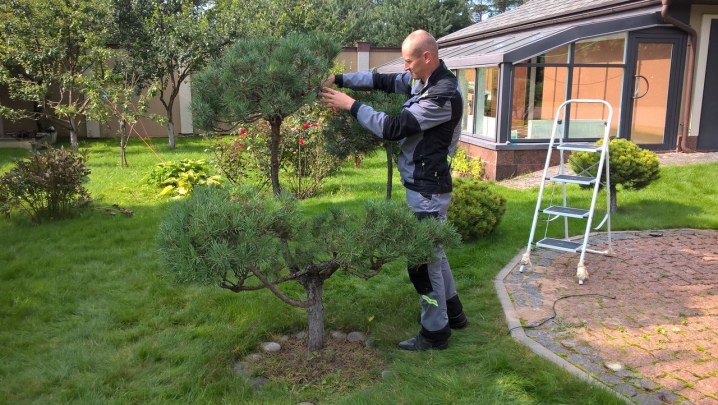
Care up to 5 years
The younger the plant, the more attention it needs. Scotch pine is no exception - its seedlings under the age of 5 years need regular weeding and loosening of the space around the trunk. Removing weeds will reduce the risk of fungus or garden pests on the tree. Loosening will provide oxygen and nutrients to the roots. It is recommended to use deciduous humus as mulch after processing; it is poured with a layer of about 3 cm.
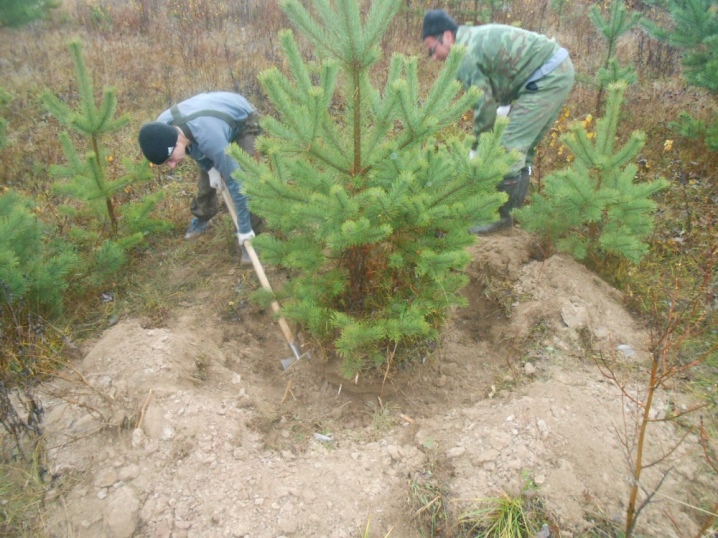
Frequent feeding, subject to planting rules, is not required for Pinus sylvestris. However, it is recommended to feed young trees in spring with compost applied to loose soil at the roots in the amount of 150-200 g per m². In dry weather, the applied fertilizer is preceded by watering. In the summer, it is good to add dry nitroammophoska (about 5 g) to the near-trunk strip once a year, followed by watering - this will have a beneficial effect on the formation of the plant crown.
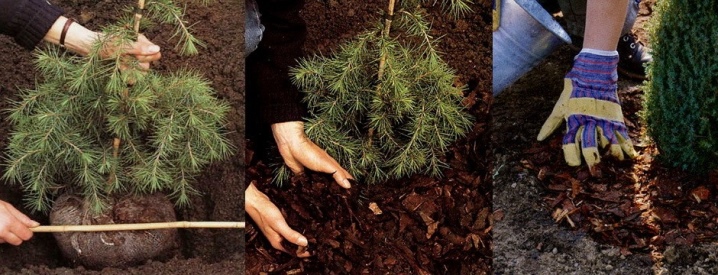
In the first year after planting, Scots pine requires intense moisture. On average, in dry weather, watering is carried out weekly: in volumes from 1 to 3 buckets of water. From 2 years after planting, moisture is introduced mainly by sprinkling the needles in the evening, in drought it is performed every day. Root watering is required no more than 1 time per month. In spring, young pine trees planted in open areas can get sunburn. To prevent this from happening, plants under the age of 5 years should be covered with a special non-woven material. For the winter, the base of the trunk of a young tree is mulched with a thick layer of peat (at least 10 cm), the branches are covered with spruce paws, tied to avoid fractures from the snow load on the crown.
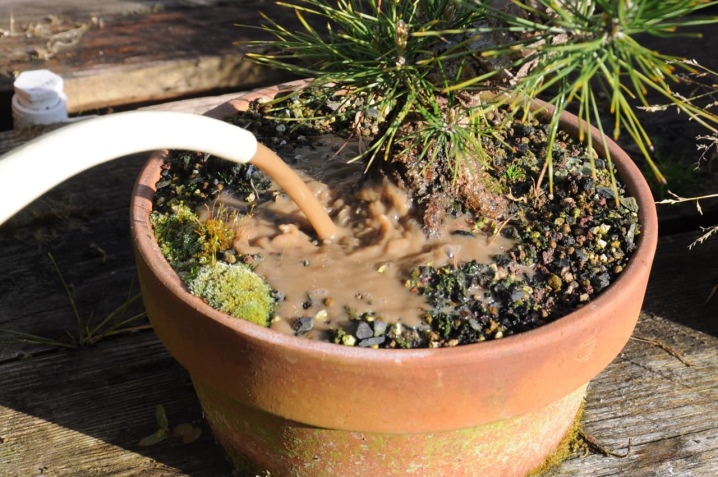
Reproduction
Independent propagation of common pine by enthusiastic summer residents is usually carried out by shoots. But you can also grow a tree from seeds. You can get them from February to April, in the second year after pollination. It is worth considering that male and female cones are always present on the same tree.But one of the types necessarily prevails. Pollination is carried out by the transfer of pollen grains by gusts of wind from the male fetus to the female, in which the ovules are located on the scales. It can take several months from the moment of pollination to fertilization.

Ready seeds from cones must first be subjected to stratification. - exposure to low temperatures in the vegetable drawer of the refrigerator, in a damp cloth. Periodically moisten the bag or gauze with the planting material. Usually the process lasts from January to April, then the seeds are moved to room temperature and sown in the ground. The sowing substrate should be moist and very loose; a peat-sand mixture is suitable.
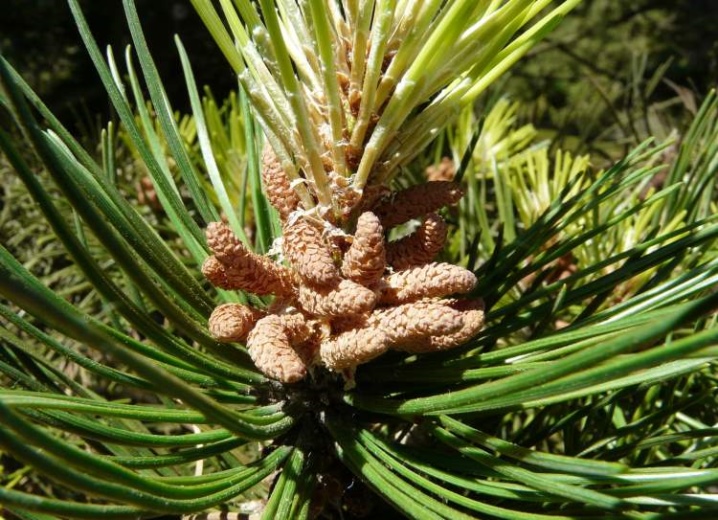
Planting is carried out to a depth of about 1 cm, watering for the period of germination of the sprouts is carried out through the pallet and drainage holes in the container. Seedlings are covered with foil, placed near the southern window to ensure a sufficiently long daylight hours. After emergence, the covering material can be removed. Transplantation into open ground will be possible for 3 years, after the formation of side shoots. Up to this point, young pines are provided with regular watering and sufficient light.
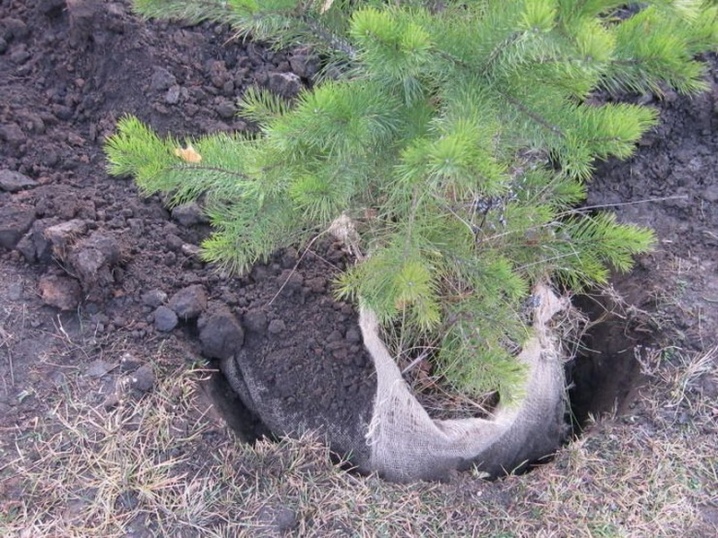
Dwarf forms of Scots pine are grafted with stock on trees with normal growth at the age of 4 years. You can use buds or cuttings. In the first case, the vaccination is carried out in the summer, in the second - in the spring.
Potential diseases and pests
Among the diseases of Scots pine, root lesions are considered especially dangerous, since it is they that lead to the complete death of the tree. Most often they are caused by poor care, the wrong choice of a planting site, the development of fungal diseases. In addition, pests often lay eggs in the near-trunk circle. After the birth of the voracious larvae of pine weevil or point resin, they feed on the root system of the tree and can completely destroy it in young seedlings. It is possible to neutralize the source of danger only with the help of insecticides, but regular loosening of the trunk circle serves as a preventive measure.
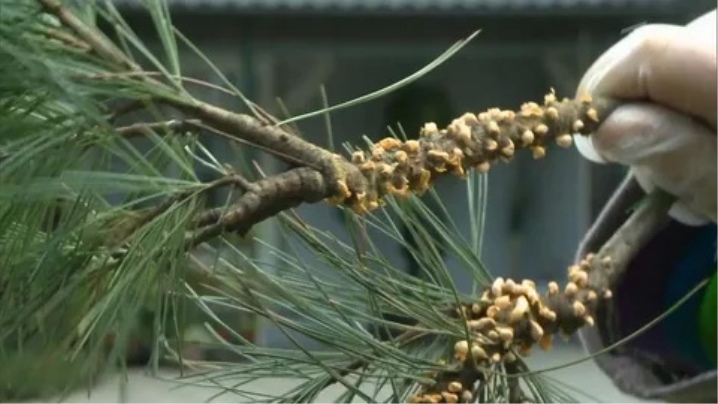
Of the pests, the spruce-fir hermes is also especially dangerous, forming colonies on the shoots that outwardly resemble a layer of cotton wool and lead to yellowing of the needles. You can get rid of it on needles only by insecticidal treatment. Another common pest is the spruce sawfly, under the influence of which the needles redden and are exterminated. As a measure to combat it, spraying with the drug "Fufanon" or its analogues is used.
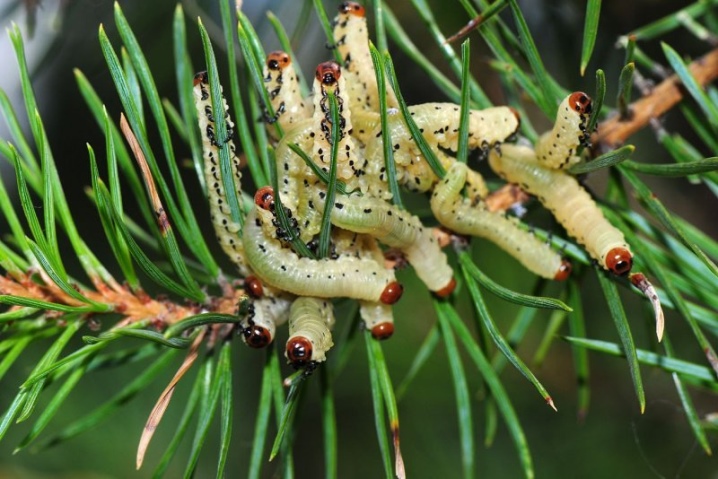
Among the fungal diseases that pose a danger to the root, shoots or trunk of Scots pine, the following can be distinguished.
- Variegated root rot / root sponge. Affected pine abundantly secretes resin, the roots are damaged, the shoots grow sharply in height, coniferous brushes appear at the tips, the needles themselves acquire a yellow-green hue. In parallel with the death of the roots, the pine is attacked by insect pests - from bark beetles to horny tails. Variegated root rot develops against the background of waterlogging of the soil, strong shade of the site, with coalescence of the roots of several trees. It is possible to reduce the risks of its appearance with a mixed type of planting.

- Honey fungus or white peripheral rot. This fungal disease is characterized by damage to the root collar and root of the pine. With an intense current, you can find the fruiting bodies of the fungus in the ground, at the base - its threadlike weaves. The tree loses its needles, it turns yellow and crumbles, the growth of the trunk stops, from the moment of infection to the death of a young tree, it rarely takes more than 2-3 years. Spraying with a 2.5% solution of copper sulfate helps to increase immunity to disease.
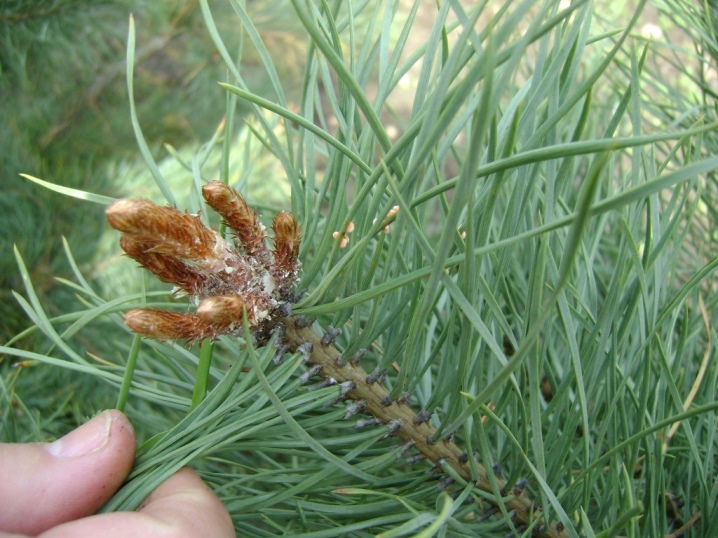
- Schütte. The fungus affects the needles, forming small brown spots on it. If the disease is missed, the tree can shed its entire crown and die.As a preventive measure for shute, autumn wood processing with a 1% solution of Bordeaux liquid is used.
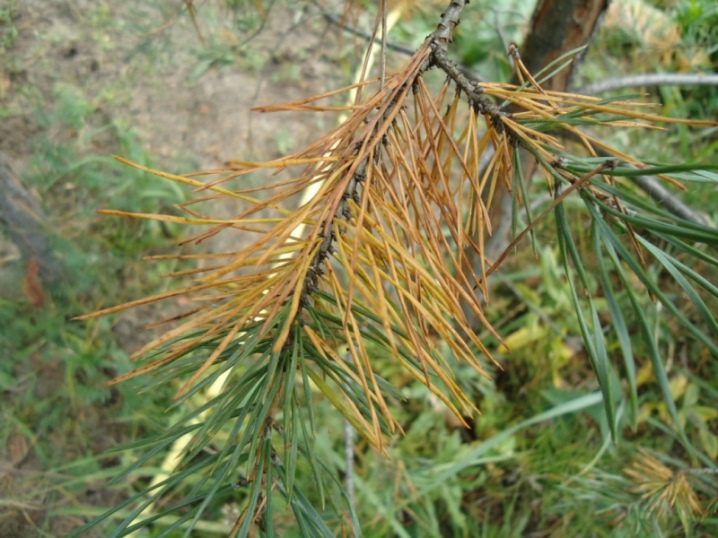
- Rust. It attacks the shoots, forming swellings and spots of a bright orange hue. Already damaged parts are subject to mandatory trimming and burning. You can eliminate the disease by treating colloidal sulfur in the amount of 3 tbsp. l. for 10 liters of water. For prevention purposes, neighboring plants are treated with the same dose.
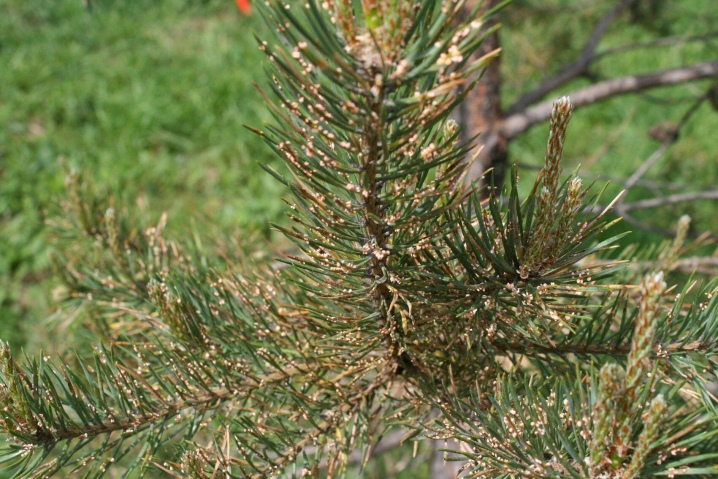
Examples in landscape design
In the field of landscape design, Scots pine can be used as an element of soil strengthening during erosion; they are planted on the slopes of ravines and sandstones. In conditions of flat cultivation, the tree is well suited for landscaping the territories of medical and rehabilitation institutions, as well as private estates. It is used in burnt-out areas as a pioneer species to accelerate soil recovery. In urban conditions, cultivation is not recommended due to the violation of the processes of photosynthesis of the tree.
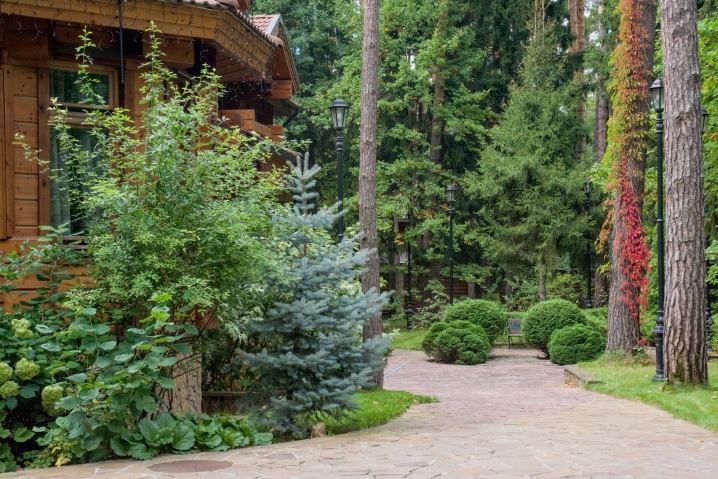
Among the beautiful examples of the use of Scots pine in landscape design, the following options can be distinguished.
- Pine variety "Vatereri" on a short trunk in the garden. The tree looks impressive against the background of other curly conifers and goes well with the landscape.
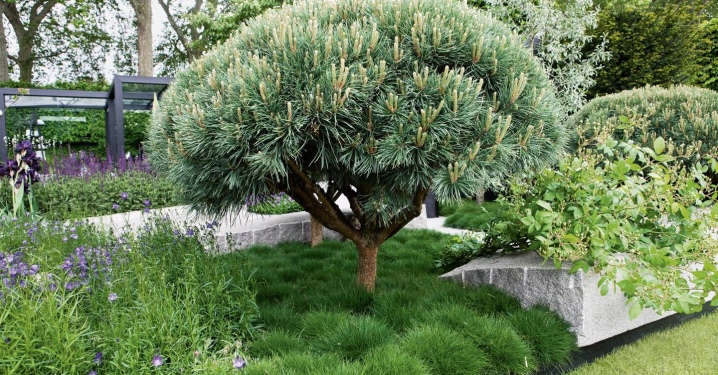
- Compact pine "Globoza viridis" on the site in a solitary planting option. It looks unusual and decorative thanks to its dwarf shape.
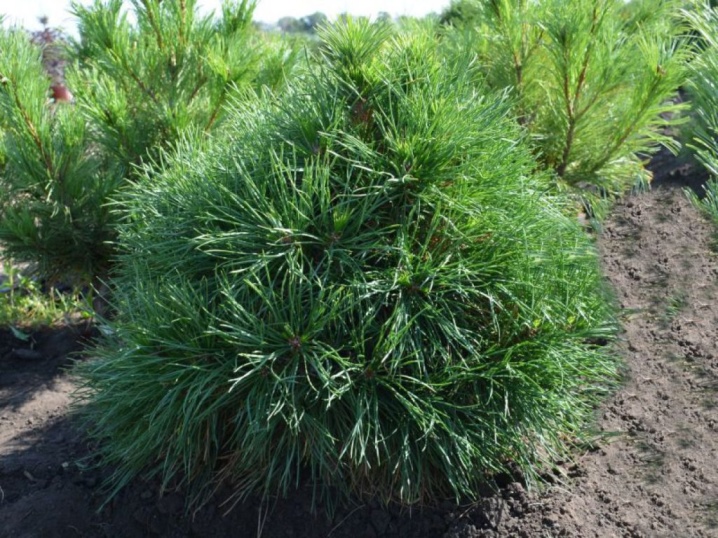
- Bright pine "Glauka" with unpicked young shoots. The plant goes well in the overall composition with deciduous trees and flowers.
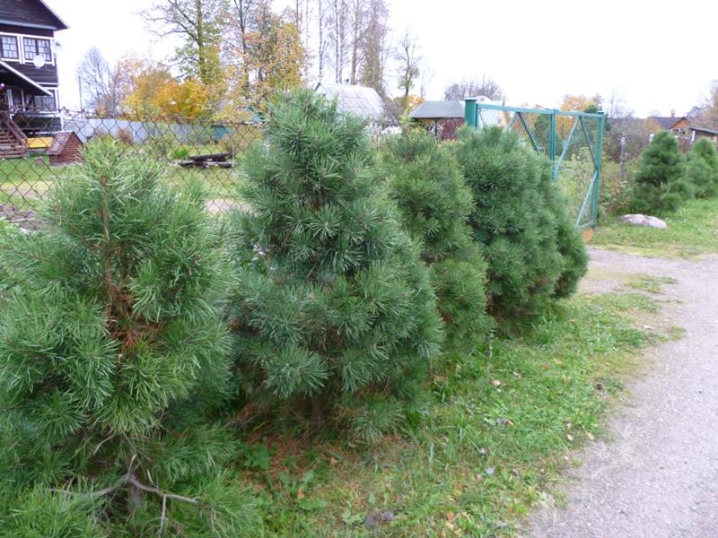
For information on how to plant a pine tree correctly, see the next video.



































































The comment was sent successfully.